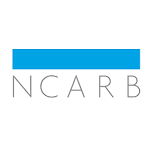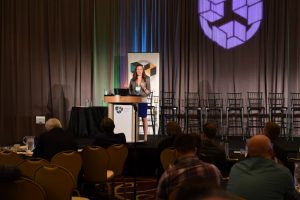The Architect Licensing Advisors Community is a group of individuals committed to assisting licensure candidates and architects as they navigate the path to licensure and reciprocity. Architect licensing advisors provide guidance throughout the licensure process by facilitating the flow of information to architecture students, licensure candidates, and architects.
The program is led by NCARB and jointly supported by the American Institute of Architects. The AIA Virginia Board of Directors has approved the re-appointment of Michael Hammon, AIA as Virginia’s Architect Licensing Advisor for another two-year term.
Get to know our new licensing advisor below! And if you are on the path to licensure and have any questions, please reach out to Michael at mhammon@glaveandholmes.com or Cathy Guske at cguske@aiava.org.

I began my architectural career developing my skills and process while attending the University of North Carolina at Charlotte where I earned my Bachelor of Arts in Architecture (2006) and Bachelor of Architecture (2007) degrees. While attending the University of North Carolina at Charlotte, I spent time abroad expanding my design knowledge in England, Italy, Austria, and Spain. Upon graduating I stayed in Charlotte, where I worked for two firms largely on education (K-12 and higher education) and civic projects located in the Carolinas, West Virginia, and Virginia. After a few years and in the midst of the last recession, I returned closer to home to work in Richmond where I expanded my portfolio to include government and commercial projects, along with adding Design-Build to my project delivery experience. For the last three plus years, I have worked at Glavé and Holmes Architecture to strengthen my project manager/project architect skills. I am currently a member of the higher education studio where I am able to immerse myself in some of my favorite project types from early in my career. I am an Associate AIA member in transition to be a full AIA member this year. Since becoming an Associate AIA member, I have volunteered the last two years to help with organizing the AIA Golf Tournament at Willow Oaks Country Club and this year serving as the chair on the committee.
In my personal time, I spend much of my time with my 10 year old son, Meir, taking day trips, doing science projects, or enjoying Marvel movies. I also enjoys traveling, having been to St. Lucia, Savannah, Georgia, San Francisco, California, and Austin, Texas in the last two years. I’m active in social sports programs in the city, and enjoy other activities on the river and getting up to the mountains for some camping and hiking which typically includes a pit stop at a local brewery. I use any leftover time to apply what I’ve learned professionally with renovation projects at my home in the Bon Air neighborhood with varying degrees of success.
As for my desire to serve as the Virginia Licensing Advisor, a combination of the professional and personal items from above about myself make me believe I would be a good fit. In regards to NCARB and the ARE 5.0, I wasn’t the quickest to move forward with taking my exams or even getting started on them. Since my career had taken such a circuitous route, I at times questioned if I was ready to start. We all take different paths to get to the same point. Mine just happened to include one where I did not work for the same firm, in the same state, or doing the same project delivery types. Similarly, on the personal side, I have had to juggle soccer practices and games, parent-teacher conferences, renovating a home, along with my professional duties at work, as well as still finding time to study. Many young professionals have started this phase of life and finding the balance to study after a full day can be the most daunting task of all. I understand that this role will require me to be there for answering questions or pointing prospective exam takers in the right direction. I believe my experiences, a less straight forward professional career and family life, will allow me to relate to them and let them know it is doable, and that they definitely should not hold out on beginning the process because it seems like it is too much. I want to provide people with a level of confidence, as well as resources, to take on the task of licensure and make it not seem like such an onerous procedure, but one that is very rewarding professionally and personally.








